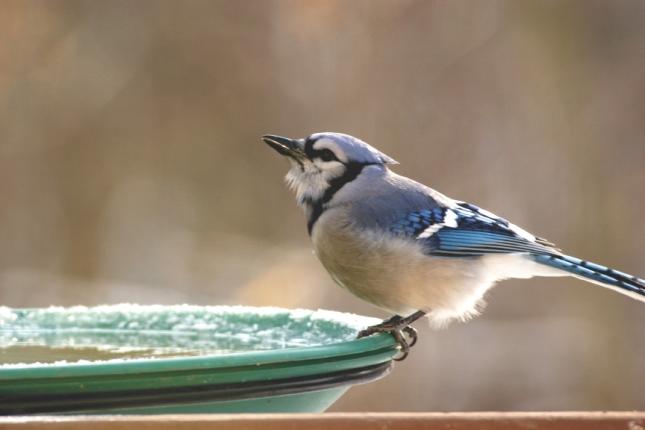 Blue Jay Sightings on the Increase
Blue Jay Sightings on the Increase
Typically known as an Eastern bird, Blue Jay sightings have increased especially over the past month. The Blue Jays in our area join their cousins the Canada Jay, Pinyon Jay, and Steller's Jay as year-round residents.
Blue Jays are blue, white and black with a lively head crest, which they can raise and lower. They are a large bird 9 to 12 inches in length. As most members of the Corvidae family, they are very intelligent. They can mimic hawk calls to make other birds in the area think there is a predator lurking nearby. They can also imitate human speech.
Blue Jays are often seen taking a drink from a bird bath. Because of their size, they prefer tray feeders or hopper feeders mounting rather than hanging. They eat peanuts, sunflower seeds and suet. Their fondness for acorns is credited for helping spread the oak trees after the last glacial period. However, Blue Jays eating acorns alone quickly start to lose body mass, unless those nuts are full of protein-rich weevils.
Jays will cache seeds and nuts to retrieve later, making repeated trips to feeders to gather food and hide it in a safe spot. Jays select only undamaged nuts for burial, avoiding 90% that would likely not germinate due to insect or other damage. Blue jays love to eat peanuts in the shell. Sometimes they will pick up a peanut and shake it to see if the shell is full or empty before they crack it open. They generally remember where they store their food and return to retrieve it when they need it.
Jays are rowdy and raucous, and so much fun to attract to your back yard. Happy Bird Feeding!
(Kathy and her husband, John, own and operate the Wild Birds Unlimited, located at 111 S. 24th Street. Billings and at www.wbu.com/billings.)

